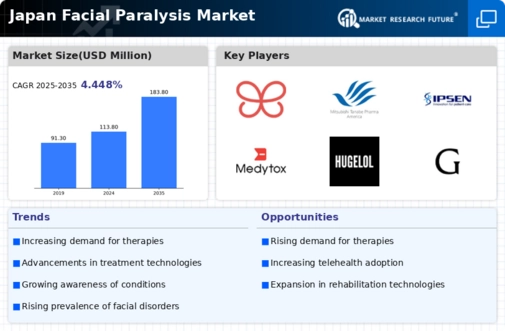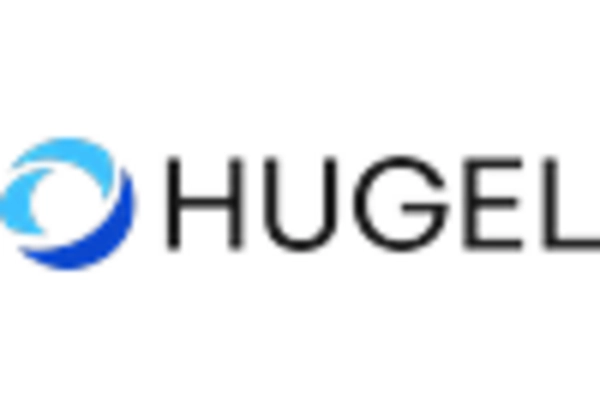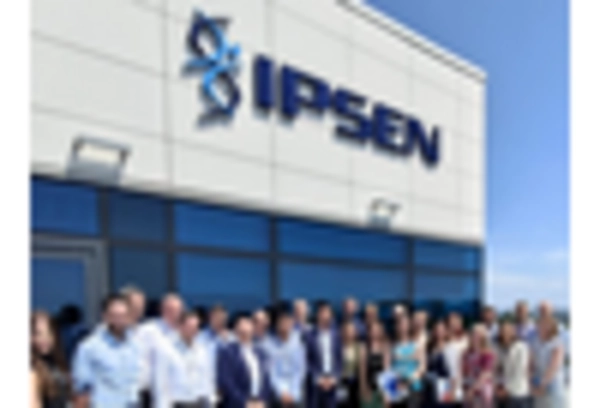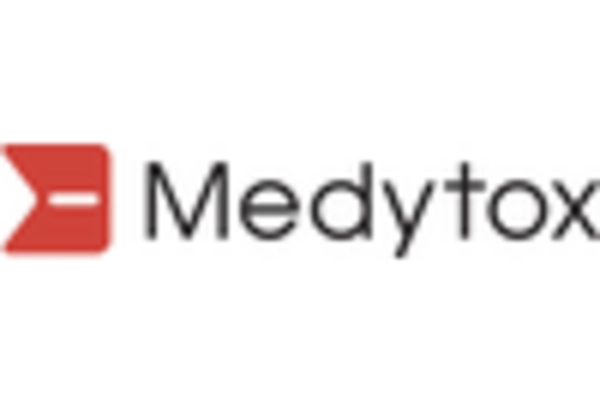Government Initiatives and Funding
Government initiatives aimed at improving healthcare access and funding for neurological disorders are pivotal for the facial paralysis market. In Japan, the Ministry of Health, Labour and Welfare has launched various programs to support research and development in this field. Increased funding for clinical trials and treatment options is expected to enhance the availability of innovative therapies. Additionally, public health campaigns aimed at raising awareness about facial paralysis are likely to encourage early diagnosis and treatment, further driving market growth. The government's commitment to improving healthcare outcomes for affected individuals suggests a positive outlook for the facial paralysis market in Japan.
Rising Interest in Clinical Research
The growing interest in clinical research related to facial paralysis is a significant driver for the market. In Japan, numerous research institutions and universities are focusing on understanding the underlying causes and developing new treatment modalities. Collaborative efforts between academia and industry are fostering innovation, with several clinical trials currently underway. This research is crucial for identifying effective therapies and improving patient outcomes. As new findings emerge, they are likely to influence treatment guidelines and practices, thereby impacting the facial paralysis market. The emphasis on evidence-based approaches may also enhance patient trust and engagement, contributing to market growth.
Increasing Incidence of Facial Paralysis
The rising incidence of facial paralysis in Japan is a crucial driver for the facial paralysis market. Factors such as aging populations and lifestyle changes contribute to this trend. According to recent health statistics, approximately 20,000 new cases of facial paralysis are reported annually in Japan, with Bell's palsy being the most common cause. This growing patient population necessitates enhanced treatment options and rehabilitation services, thereby expanding the market. Furthermore, the increasing prevalence of neurological disorders, which often lead to facial paralysis, is likely to further boost demand for specialized therapies and interventions. As healthcare providers focus on addressing these needs, the facial paralysis market is expected to experience significant growth in the coming years.
Growing Demand for Non-Invasive Treatments
The shift towards non-invasive treatment options is reshaping the facial paralysis market. Patients in Japan are increasingly seeking alternatives to surgical interventions, favoring therapies that minimize recovery time and risks. Non-invasive techniques, such as physical therapy, acupuncture, and transcutaneous electrical nerve stimulation, are gaining popularity. This trend is supported by a growing body of evidence suggesting that these methods can effectively improve facial function and reduce symptoms. As patient preferences evolve, healthcare providers are likely to adapt their offerings, leading to a broader range of non-invasive solutions in the facial paralysis market. This shift may also attract new entrants to the market, further stimulating competition and innovation.
Advancements in Rehabilitation Technologies
Technological innovations in rehabilitation are transforming the landscape of the facial paralysis market. In Japan, the integration of robotics and artificial intelligence in therapy is gaining traction. Devices such as electrical stimulation units and biofeedback systems are being utilized to enhance recovery outcomes for patients. The market for rehabilitation technologies is projected to grow at a CAGR of 8% over the next five years, driven by the demand for effective treatment solutions. These advancements not only improve the quality of care but also increase patient engagement in their recovery process. As healthcare facilities adopt these technologies, the facial paralysis market is likely to expand, offering new opportunities for both patients and providers.

















Leave a Comment